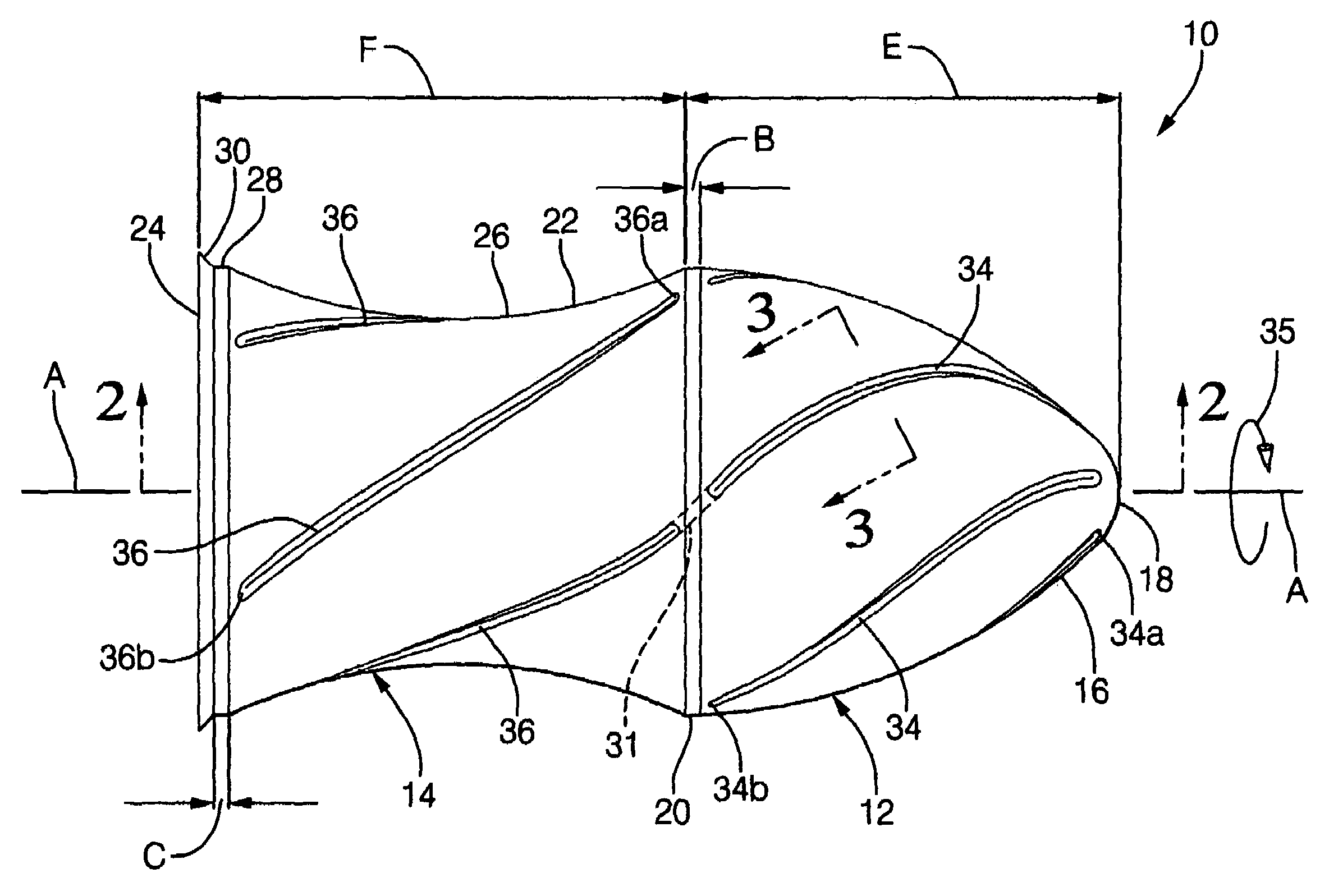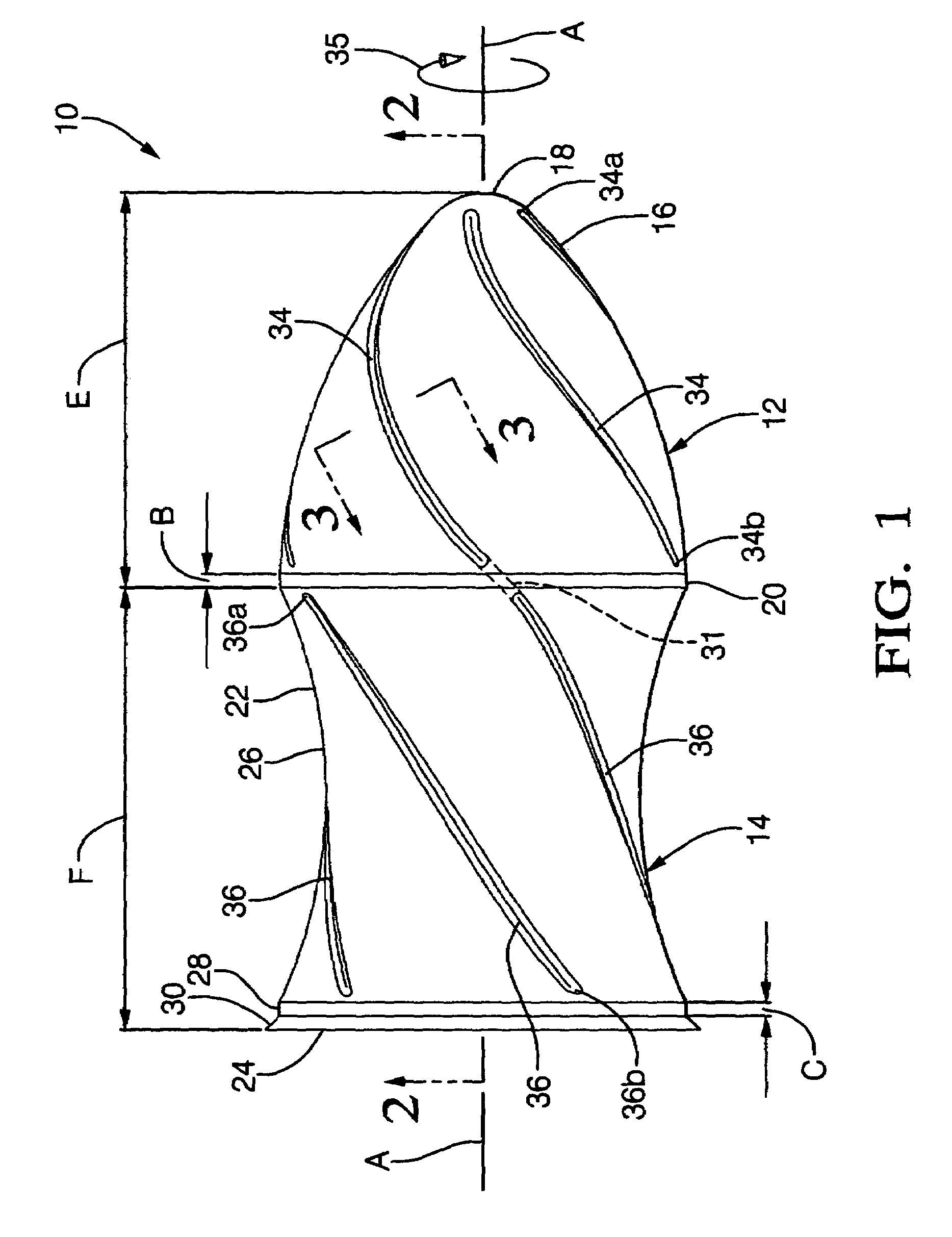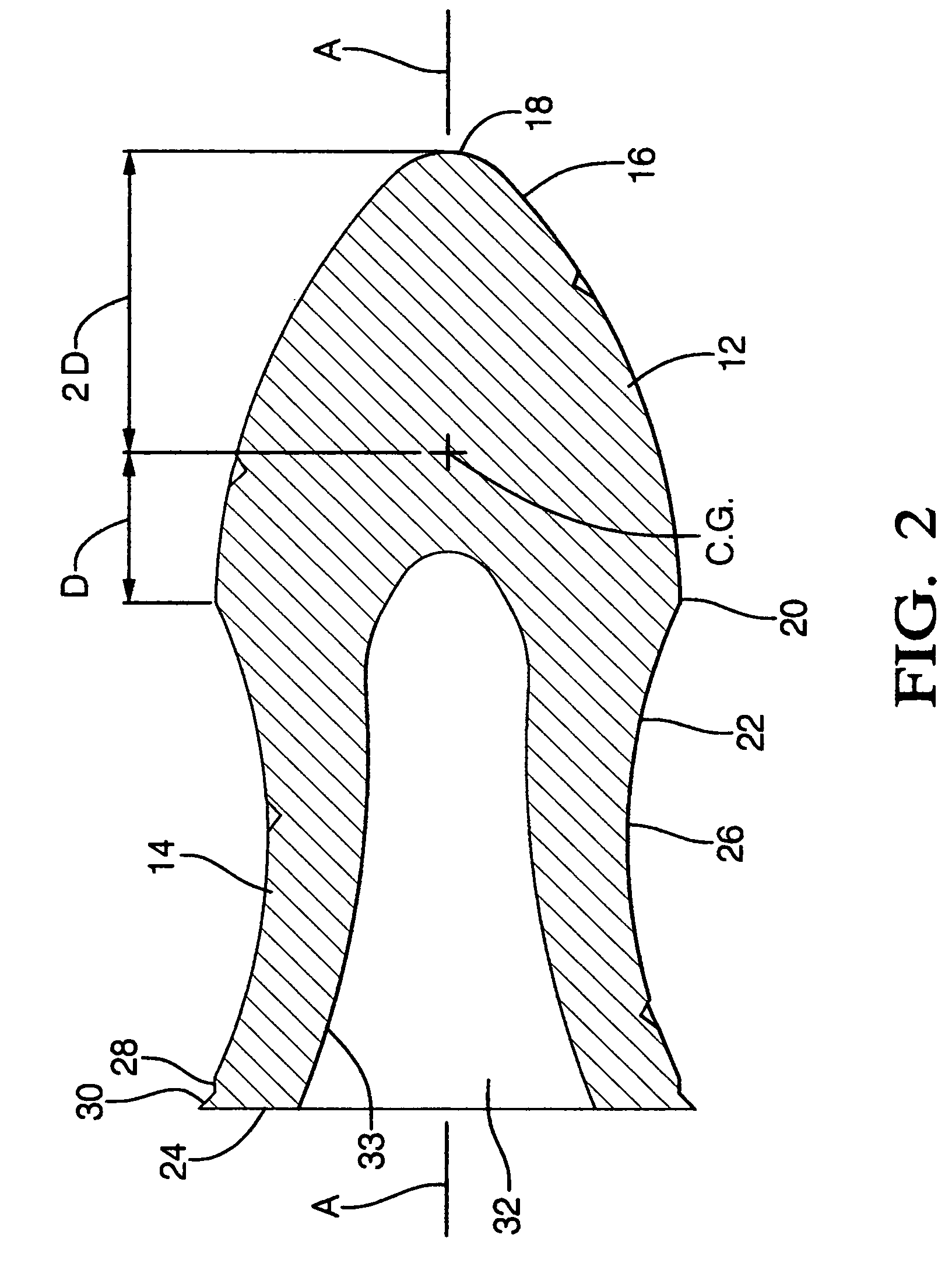Aerodynamic air gun projectile
a gas-propelled and projectile technology, applied in the field of gas-propelled projectiles, can solve the problems of significant large losses, appreciable range loss, and inability to accelerate the compression work represented by the column of highly compressed air in the bore, so as to reduce the turbulent airflow, enhance the laminar flow, and reduce the overall drag
- Summary
- Abstract
- Description
- Claims
- Application Information
AI Technical Summary
Benefits of technology
Problems solved by technology
Method used
Image
Examples
Embodiment Construction
[0048]The present invention is intended for application with small caliber air powered arms such as air rifles and air hand guns, which can be of the pump type in which a charge of pressurized air is generated by a mechanism integrated into the weapon's structure adjacent its breech and is effective for powering a single shot, or, alternatively, one which employs a disposable, pre-pressurized air cylinder, which can power a number of successive shots.
[0049]Referring to FIG. 1, a pellet or projectile, indicated generally at 10, embodies the preferred embodiment of the present invention. The projectile 10 has a head portion 12 and a skirt portion 14 which are integrally formed, such as by casting, of a dense malleable material such as lead or a lead alloy. In consideration of alleged dilatory long term adverse environmental effects of lead, it is contemplated that other biodegradable, non-toxic materials can be substituted without departing from the spirit of the invention.
[0050]The c...
PUM
 Login to View More
Login to View More Abstract
Description
Claims
Application Information
 Login to View More
Login to View More - R&D
- Intellectual Property
- Life Sciences
- Materials
- Tech Scout
- Unparalleled Data Quality
- Higher Quality Content
- 60% Fewer Hallucinations
Browse by: Latest US Patents, China's latest patents, Technical Efficacy Thesaurus, Application Domain, Technology Topic, Popular Technical Reports.
© 2025 PatSnap. All rights reserved.Legal|Privacy policy|Modern Slavery Act Transparency Statement|Sitemap|About US| Contact US: help@patsnap.com



